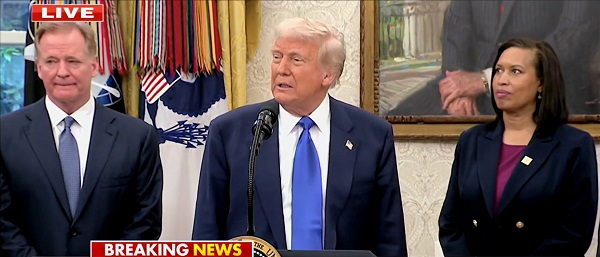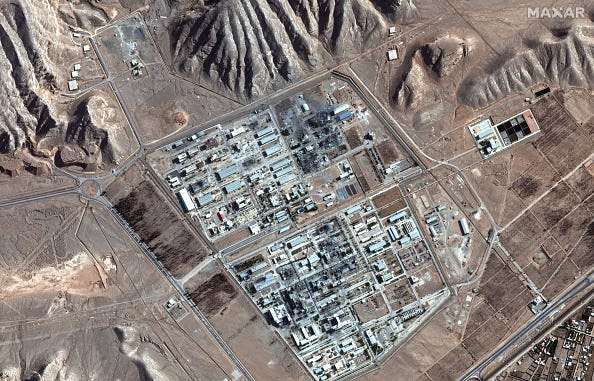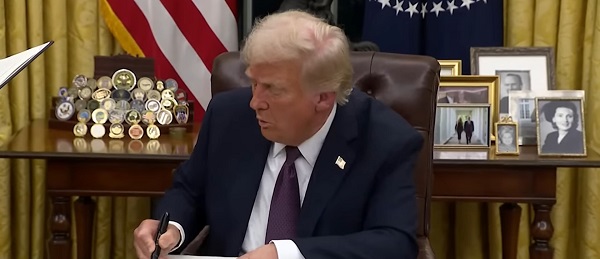Energy
Ottawa’s plan to decarbonize Canada’s electricity by 2035 not feasible and would require equivalent of 23 Site C hydroelectric dams

From the Fraser Institute
By Elmira Aliakbari and Jock Finlayson
The federal government’s plan to make all electricity generation in Canada carbon-free by 2035 is impractical and highly unlikely, given physical, infrastructure, financial, and regulatory realities. So says a new study published today by the Fraser Institute, an independent, non-partisan Canadian public policy think-tank.
“Canada’s federal government has set an ambitious, and, frankly, unrealistic target of achieving complete carbon-free electricity in ten years,” said Jock Finlayson, Fraser Institute senior fellow and co-author of Implications of Decarbonizing Canada’s Electricity Grid.
The study finds that in 2023, nearly 81 per cent of Canada’s electricity came from carbon-free energy sources, including hydro, nuclear, wind and solar. But to replace the remaining 19 per cent which uses fossil fuels, in the next 10 years, would require constructing the equivalent of:
• Approximately 23 large hydroelectric dams, similar in size to BC’s Site C, or 24 comparable to Newfoundland and Labrador’s Muskrat Falls, or;
• More than four nuclear power plants similar in size to Ontario’s Darlington power station, or 2.3 large scale nuclear power plants equivalent to Ontario’s Bruce Power, or;
• Around 11,000 large wind turbines, which would not only require substantial investments in back-up power systems (since wind is intermittent) but would also require clearing 7,302 square kilometers of land—larger than the size of Prince Edward Island—excluding the additional land required for transmission infrastructure.
Currently, the process of planning and constructing major electricity generation facilities in Canada is complicated and time-consuming, often marked by delays, regulatory challenges, and significant cost overruns.
For example, BC’s Site C project took approximately 43 years from the initial planning studies in 1971 to receive environmental certification in 2014, with completion expected in 2025 at a cost of $16 billion.
What’s more, the significant energy infrastructure listed above would only meet Canada’s current electricity needs. As Canada’s population grows, the demand for electricity will increase significantly.
“It is not at all realistic that this scale of energy infrastructure can be planned, approved, financed and built in just 10 years, which is what would be required merely to decarbonize Canada’s existing electricity needs,” said Elmira Aliakbari, director natural resource studies at the Fraser Institute and study co-author.
“This doesn’t even account for the additional infrastructure needed to meet future electricity demand. Decarbonizing Canada’s electricity generation by 2035 is another case where the government has set completely unrealistic timelines without any meaningful plan to achieve it.”
- This essay examines the implications of decarbonizing Canada’s electricity grid by replacing existing fossil fuel-based generation with clean energy sources.
- In 2023, clean energy sources—including hydro, nuclear, and wind—produced 497.6 terawatt hours (TWh) of electricity, accounting for nearly 81% of Canada’s total supply, while fossil fuels contributed 117.7 TWh (19.1%). To replace this fossil fuel generation with hydro power alone would require about 23 large projects similar to BC’s Site C or 24 like Newfoundland & Labrador’s Muskrat Falls. Using nuclear power would necessitate building 2.3 facilities equivalent to Ontario’s Bruce Power or 4.3 similar to Darlington Nuclear Generating Station.
- The process of planning and constructing electricity generation facilities in Canada is complex and time-consuming, often marked by delays, regulatory hurdles, and significant cost overruns. For example, the BC Site C project took approximately 43 years from the initial feasibility and planning studies in 1971 to receive environmental certification in 2014, with completion expected in 2025 at a cost of $16 billion.
- Land requirements for new electricity generation facilities are also significant; replacing 117.7 TWh of fossil fuel-based electricity with hydro power, for instance, would need approximately 26,345 square kilometers, nearly half the size of Nova Scotia.
- The slow pace of regulatory approvals, high and rising costs of major energy projects, substantial land requirements, and public opposition to project siting all cast doubt on the feasibility of achieving the necessary clean electricity infrastructure in the coming decade to fully replace fossil fuels in Canada.
Authors:
More from this study
Automotive
Federal government should swiftly axe foolish EV mandate

From the Fraser Institute
Two recent events exemplify the fundamental irrationality that is Canada’s electric vehicle (EV) policy.
First, the Carney government re-committed to Justin Trudeau’s EV transition mandate that by 2035 all (that’s 100 per cent) of new car sales in Canada consist of “zero emission vehicles” including battery EVs, plug-in hybrid EVs and fuel-cell powered vehicles (which are virtually non-existent in today’s market). This policy has been a foolish idea since inception. The mass of car-buyers in Canada showed little desire to buy them in 2022, when the government announced the plan, and they still don’t want them.
Second, President Trump’s “Big Beautiful” budget bill has slashed taxpayer subsidies for buying new and used EVs, ended federal support for EV charging stations, and limited the ability of states to use fuel standards to force EVs onto the sales lot. Of course, Canada should not craft policy to simply match U.S. policy, but in light of policy changes south of the border Canadian policymakers would be wise to give their own EV policies a rethink.
And in this case, a rethink—that is, scrapping Ottawa’s mandate—would only benefit most Canadians. Indeed, most Canadians disapprove of the mandate; most do not want to buy EVs; most can’t afford to buy EVs (which are more expensive than traditional internal combustion vehicles and more expensive to insure and repair); and if they do manage to swing the cost of an EV, most will likely find it difficult to find public charging stations.
Also, consider this. Globally, the mining sector likely lacks the ability to keep up with the supply of metals needed to produce EVs and satisfy government mandates like we have in Canada, potentially further driving up production costs and ultimately sticker prices.
Finally, if you’re worried about losing the climate and environmental benefits of an EV transition, you should, well, not worry that much. The benefits of vehicle electrification for climate/environmental risk reduction have been oversold. In some circumstances EVs can help reduce GHG emissions—in others, they can make them worse. It depends on the fuel used to generate electricity used to charge them. And EVs have environmental negatives of their own—their fancy tires cause a lot of fine particulate pollution, one of the more harmful types of air pollution that can affect our health. And when they burst into flames (which they do with disturbing regularity) they spew toxic metals and plastics into the air with abandon.
So, to sum up in point form. Prime Minister Carney’s government has re-upped its commitment to the Trudeau-era 2035 EV mandate even while Canadians have shown for years that most don’t want to buy them. EVs don’t provide meaningful environmental benefits. They represent the worst of public policy (picking winning or losing technologies in mass markets). They are unjust (tax-robbing people who can’t afford them to subsidize those who can). And taxpayer-funded “investments” in EVs and EV-battery technology will likely be wasted in light of the diminishing U.S. market for Canadian EV tech.
If ever there was a policy so justifiably axed on its failed merits, it’s Ottawa’s EV mandate. Hopefully, the pragmatists we’ve heard much about since Carney’s election victory will acknowledge EV reality.
Daily Caller
Trump Issues Order To End Green Energy Gravy Train, Cites National Security


From the Daily Caller News Foundation
By Audrey Streb
President Donald Trump issued an executive order calling for the end of green energy subsidies by strengthening provisions in the One Big Beautiful Bill Act on Monday night, citing national security concerns and unnecessary costs to taxpayers.
The order argues that a heavy reliance on green energy subsidies compromise the reliability of the power grid and undermines energy independence. Trump called for the U.S. to “rapidly eliminate” federal green energy subsidies and to “build upon and strengthen” the repeal of wind and solar tax credits remaining in the reconciliation law in the order, directing the Treasury Department to enforce the phase-out of tax credits.
“For too long, the Federal Government has forced American taxpayers to subsidize expensive and unreliable energy sources like wind and solar,” the order states. “Reliance on so-called ‘green’ subsidies threatens national security by making the United States dependent on supply chains controlled by foreign adversaries.”
Dear Readers:
As a nonprofit, we are dependent on the generosity of our readers.
Please consider making a small donation of any amount here.
Thank you!
Former President Joe Biden established massive green energy subsidies under his signature 2022 Inflation Reduction Act (IRA), which did not receive a single Republican vote.
The reconciliation package did not immediately terminate Biden-era federal subsidies for green energy technology, phasing them out over time instead, though some policy experts argued that drawn-out timelines could lead to an indefinite continuation of subsidies. Trump’s executive order alludes to potential loopholes in the bill, calling for a review by Secretary of the Treasury Scott Bessent to ensure that green energy projects that have a “beginning of construction” tax credit deadline are not “circumvented.”
Additionally, the executive order directs the U.S. to end taxpayer support for green energy supply chains that are controlled by foreign adversaries, alluding to China’s supply chain dominance for solar and wind. Trump also specifically highlighted costs to taxpayers, market distortions and environmental impacts of subsidized green energy development in explaining the policy.
Ahead of the reconciliation bill becoming law, Trump told Republicans that “we’ve got all the cards, and we are going to use them.” Several House Republicans noted that the president said he would use executive authority to enhance the bill and strictly enforce phase-outs, which helped persuade some conservatives to back the bill.
-

 Alberta1 day ago
Alberta1 day agoAlberta school boards required to meet new standards for school library materials with regard to sexual content
-

 Business2 days ago
Business2 days agoCarney government should recognize that private sector drives Canada’s economy
-

 Alberta2 days ago
Alberta2 days agoFourteen regional advisory councils will shape health care planning and delivery in Alberta
-

 Environment1 day ago
Environment1 day agoEPA releases report on chemtrails, climate manipulation
-

 Crime1 day ago
Crime1 day agoSweeping Boston Indictment Points to Vast Chinese Narco-Smuggling and Illegal Alien Labor Plot via Mexican Border
-

 Business2 days ago
Business2 days agoCannabis Legalization Is Starting to Look Like a Really Dumb Idea
-

 Bruce Dowbiggin2 days ago
Bruce Dowbiggin2 days agoThe Covid 19 Disaster: When Do We Get The Apologies?
-

 Business1 day ago
Business1 day agoUN’s ‘Plastics Treaty’ Sports A Junk Science Wrapper









